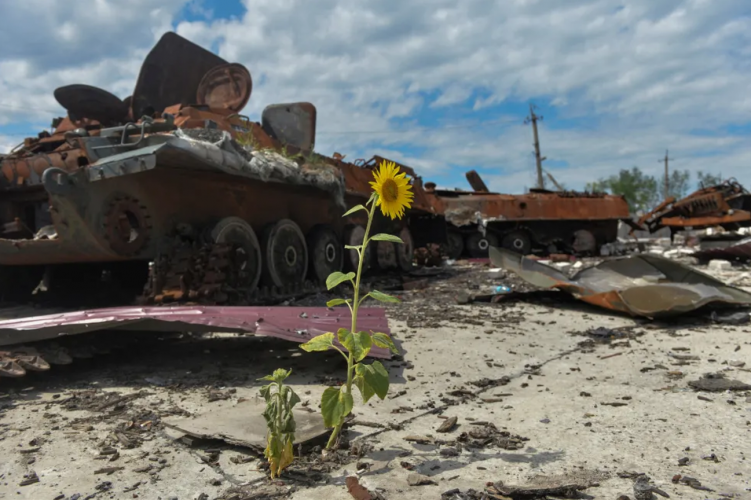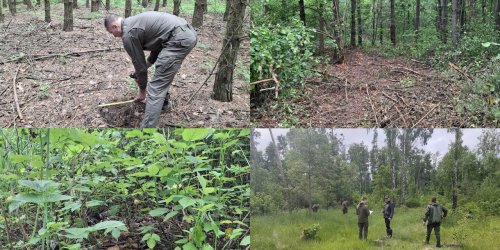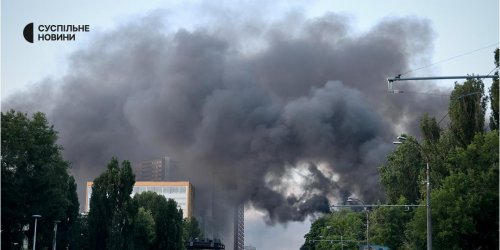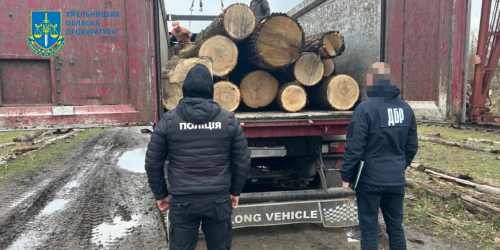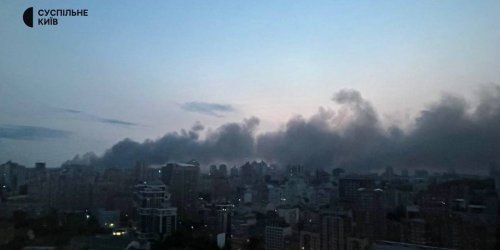The russian federation continues to commit new acts of nuclear, missile, ecological and food terror in Ukraine and threatens the security of Europe and the world.
However, despite the war, Ukraine continues to implement European standards in environmental legislation, reports Ministry of Environment.
Thus, on July 18, the Parliament approved the Law of Ukraine about the ratification of the Amendment and the Second amendment to the Convention on environmental impact assessment in a transboundary context.
The law expands the list of activities covered by the Convention, introduces monitoring and regular reporting on the implementation of the Convention, which is especially important in the post-war period. After all, Ukraine must be rebuilt according to European standards and requirements.
The Verkhovna Rada also approved in the first reading draft law No. 6477 about the National register of emissions and transfer of pollutants.
Threats to nuclear and radiation safety
The situation in occupied by russian troops Zaporizhzhia NPP continues to pose a threat to all of Europe. The occupiers apply repression and kidnap key employees of the captured ZNPP. The invaders captured and took the head of the environmental protection service, Ihor Kvashnyn, to an unknown destination. The security service is responsible for the safety of the NPP environment, i.e. the absence of contamination by any substances, including radioactive ones.
On July 18, the russian military abducted Serhiy Pikhtin, the deputy head of the decontamination department for operation and management of radioactive waste, and Olena Ryabtseva, the master of the decontamination department. Currently, their location is unknown.
Also, on July 18, the occupiers forcibly entered the radiation zone of block №2 of the ZNPP without special clothing and compliance with the prescribed preparatory procedures for staying in the radiation zone. On their clothes, they could spread radiation particles around the station and the surrounding area.
Nuclear safety continues to be at risk as the russian military uses the site of the nuclear plant as a military base. The occupiers placed heavy weapons near the ZNPP, in particular, multiple rocket launcher systems. During the week, the russian military repeatedly shelled the city of Nikopol from heavy weapons stationed near the station.
The occupiers have brought at least 14 pieces of heavy military equipment with ammunition loads, armaments and explosives into the engine room of the 1st power unit of the Zaporizhzhia Nuclear Power Plant. The entire arsenal of imported heavy equipment with all ammunition is located very close to the equipment that ensures the operation of the turbogenerator. In particular, in the immediate vicinity of the main oil tank, which contains flammable oil that cools the steam turbine. There is also explosive hydrogen, which is used to cool the generator.
"The military equipment is located in close proximity to the main oil tank which contains easily flammable oil that cools down the steam turbine. There is also explosive hydrogen there used for cooling down the generator. The occupiers’ military equipment has blocked access to the power unit’s fire-fighting equipment. Should a fire start as a result, for instance, of the detonation of ammunition, the magnitude of the tragedy would be comparable to that of the Chornobyl Nuclear Power Plant," the material said.
IN Exclusion zones of the Chernobyl NPP work continues to eliminate the consequences of the occupation by Russian troops. Due to the fact that the equipment of the Russian army invaded from the territory of the Exclusion Zone, there are risks of transferring radioactive contamination beyond its borders.
Currently, a team of Greenpeace specialists is in the Exclusion Zone, which, in agreement with the Ukrainian government, is conducting an independent radiation survey and assessment of the impact of the Russian occupation on the environment.
On July 19, the Security Service of Ukraine reported that it had collected evidence of Russian nuclear terrorism in the Exclusion Zone.
The territory of the exclusion zone has not yet been demined, which violates the integrity of the facility's radiation safety system, which Ukraine has been building together with international partners for decades. The probability of uncontrolled explosions and fires caused by them is still too high.
Attacks on infrastructure and industrial facilities
July 14:
- launched missile attacks at the Vinnytsia downtown. As a result of this attack, 25 civilians were killed, dozens of buildings were damaged or destroyed, and 40 cars were burned;
- carried out air-missile strikes on the industrial zone of the city of Kramatorsk, the Donetsk region. Due to the strikes, there was no electricity in some parts of the city;
- attacked the Vuglegirska TPP in the Donetsk region;
- shelled and damaged an enterprise in the Osnovyanskyi district of Kharkiv and hangar premises of a subway depot in the Saltivskyi district;
- destroyed a granary and office space of an agricultural enterprise in Kamianske, the Zaporizhzhya region.
July 15:
- launched a missile attack at the Southern Machine-Building Plant in the city of Dnipro. The fire at the enterprise was extinguished only after 38 hours;
- shelled the Nikopolskyi district of the Dnipropetrovsk region using MSLRs. Due to the shelling, a strong fire broke out, fuel products were burning in an area of about 1,700 square meters.
July 16:
- launched a missile attack at Odesa, hitting the warehouse and workshop of a furniture manufacturing company. As a result of the attack, a large-scale fire broke out in an area of 1,000 square meters;
- fired upon the village Tavriyske in the Zaporizhzhia region and damaged the medium-pressure gas pipeline. Due to hostilities, it is not possible to carry out emergency recovery work.
July 17:
- the occupiers launched 18 artillery strikes at the village of Ivashki, the Zolochiv community, and the Kharkiv region. Some of the shells hit and destroyed a local distillery plant;
- Mykolaiv was subjected to massive rocket attacks causing fires at 2 industrial enterprises. The fires were extinguished.
July 18:
- launched a missile attack at an elevator in the Synelnykove district of the Dnipropetrovsk region. More than 5,000 tons of grain were destroyed;
- shelled the landfill in Balaklia, the Kharkiv region causing a fire;
- destroyed a car and agricultural machinery showrooms in Mykolaiv;
- shelled Nikopol in the Dnipropetrovsk region, destroying the buildings of an industrial and energy enterprise, and a river port.
July 19:
- attack on a cannery in Mykolaiv.
July 20:
- the occupiers launched a rocket attack at the industrial part of the city of Kramatorsk.
Large-scale fires at infrastructure and industrial facilities lead to air poisoning with particularly dangerous substances. Pollutants can be carried by winds over long distances.
Pollution directly caused by hostilities
From February 24 to July 20, 2022, 163,399 explosive objects, including 2,080 aerial bombs, were defused on the territory of Ukraine. The territory with an area of 65 thousand 568 hectares was surveyed. During this time, russia launched more than 3,000 cruise missiles over Ukraine.
Destroyed military equipment and ammunition, as well as exploding missiles and aerial bombs, contaminate the soil and groundwater with chemicals, including heavy metals.
In Irpen, Kyiv region, during the period of russian occupation, 1,836 buildings were destroyed, and 10,596 buildings were damaged. Local residents still find destroyed equipment, ammunition, mines in their yards. The total damage estimate is UAH 25.3 billion.
In the city of Bucha, Kyiv region, 185 buildings were destroyed, and 2,514 were damaged. Damages are estimated at 5.2 billion hryvnias.
"The destruction of buildings and settlements leads to environmental pollution with construction debris and asbestos. The consequences of such pollution to the environment will last for years," the article noted.
Pity the nature reserves and protected ecosystems
As a result of the fires caused by the actions of the russian troops, more than 9,000 hectares of forest were damaged in the territory of the Holy Mountains National Nature Park. The amount of damages due to atmospheric air pollution due to forest fires in the territory of Donetsk region after missile and bomb strikes is more than 91 billion hryvnias.
Due to shelling by russian troops, the Biloberezhzhia Svyatoslava National Park suffered the most damage, compared to other objects of the nature reserve fund of the Mykolaiv region. 1,840 hectares burned on the Kinburn Peninsula.
Extinguishing forest fires is complicated by hostilities and the presence of mines in forest areas.
On July 14, in the Zhytomyr region, a vehicle of the state forest guard hit a mine on a forest road. As a result of the explosion, two foresters were killed, six more were injured.
Due to the negative impact of military actions, the soil ecosystem suffers. After all, ammunition casings are made of cast iron alloy, to which, in addition to iron and carbon, sulfur and copper are added. If such fragments remain in the ground, over time they begin to oxidize, enter the cycle of environmental substances and enter food chains.
During the explosion, toxic gases such as sulphur oxide, nitrogen oxide, and carbon monoxide are released into the atmosphere. From the atmosphere, these gases are returned to the soil through acid rain, which changes the pH of the ground and causes plant burns. Powerful explosions can destroy a waterproof layer of country rock. In this case, the water release into the soil is accelerated. Thus, aggressive pollutants enter aquifers and waterways. Some of them can be carried far beyond the battlefield.
Damage to water resources
The russian invasion caused critical damage to the water infrastructure of Donbas. This is stated in a study published by Bellingcat. Based on satellite images, experts concluded that the water supply system, which provided drinking water to 4 million people, stopped functioning. The system of canals and pipelines was damaged as a result of many months of shelling.
Also, water cannot flow without the electricity needed to run pumps and filters. Power lines were cut, power plants were bombed. As a result, due to russian aggression, the entire region is cut off from basic communal services (electricity, water supply, sewage). As long as hostilities continue, the water situation will remain critical, as repairs will require demining and power restoration.
The SEI specialists calculated the damage caused as a result of the destruction by Russian troops of the Oskil reservoir dam in the Kharkiv region. Over UAH 883.7 million worth of fish died due to the discharge of water during the spawning period. According to the Institute of Fisheries of the National Academy of Agrarian Sciences of Ukraine, as a result of hostilities, 1,997,500 specimens of aquatic biological resources were destroyed, including silver crucian, redfin fish, tench, bream, carp, catfish, zander, perch, and others.
Black and Azov seas
Russian forces are attacking infrastructure along the coasts of the Black and Azov seas and ships at anchorages, leading to water pollution and the spread of toxins into the sea.
On July 18, the russian army launched a missile attack on the Odesa region with cruise missiles from the Black Sea. One rocket hit the bridge across the Dniester estuary, which is not functioning, because the occupiers have been hitting it with rockets since April.
Russian troops have placed a large number of mines in the waters of the Black Sea, which threaten shipping, people and marine animals. On July 14, a man was blown up by a mine and died in the coastal waters of one of the beaches in Odesa.
As Ecopolitic reported before, in Ukraine, in the 4 months since the start of the full-scale invasion, russian troops inflicted land and air losses in the amount of 254.3 bln hryvnias, according to the calculations of the Operational Headquarters.

